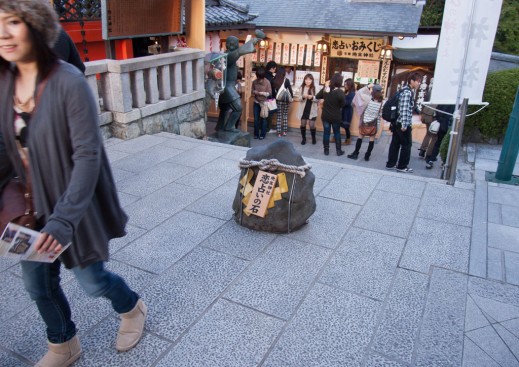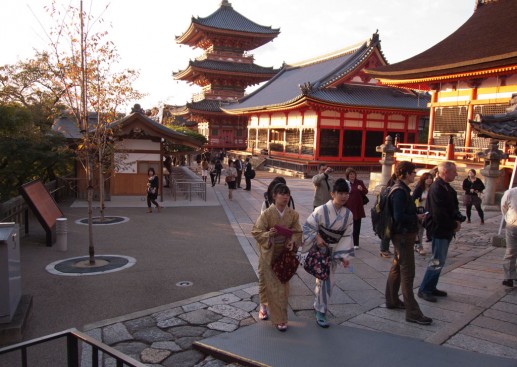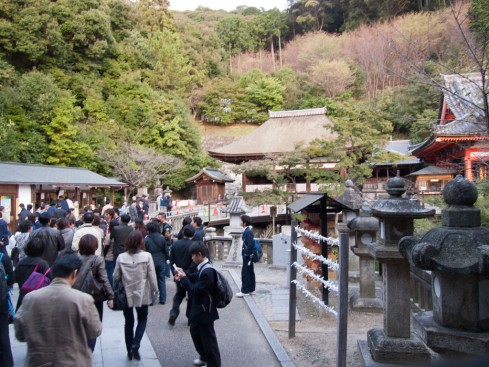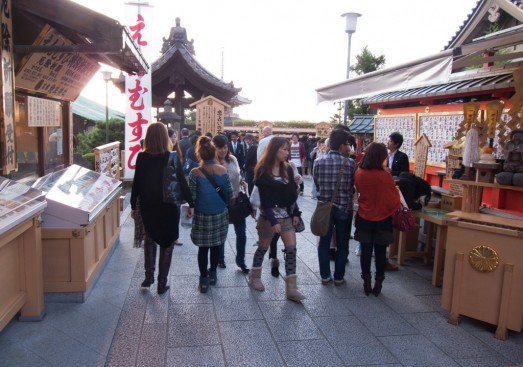October 26, 2011
I am making a single post for the Kiyomizudera Temple and Jishu Shrine since these popular sites are located right next to each other and anyone who visits one of them will probably visit both.
Kiyomizudera was founded in 778, though the present buildings only date back to a restoration in 1633.

The main hall is the source of the Japanese expression “to jump off the porch at Kiyomizu” meaning “to take the plunge.” This refers to an old superstition that anyone who survived such a jump would have his wish granted. Hundreds tried it during the Edo Period and some survived. Guards are present to keep anyone from trying it now.

Though small, Jishu Shrine attracts numerous tourists, particularly those who hope to be lucky in love.
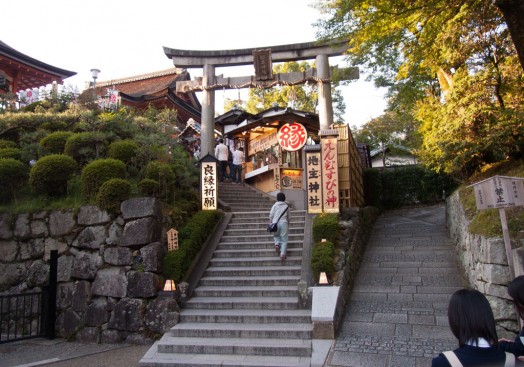
Four kami are enshrined here but the most popular is Oukuninushi who specializes in successful matchmaking. Here he is shown with his friend, the wily Hare of Inaba.

(I think this works sort of like Cupid, except that he hits you with the hammer.)
Also popular is Daikoku, one of the Seven Lucky Gods. He specializes in commercial success and economic prosperity.

He is usually depicted carrying a sack and holding a hammer, and yes, if he hits you with the hammer you will get money.
Visitors line up to pat Daikoku on the head for good luck.
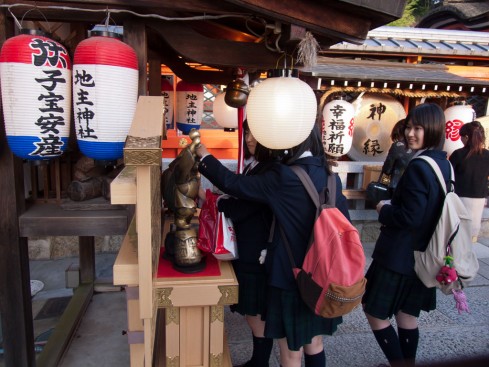
Opposite Daikoku’s little shrine is one for Okage Myoujin, protector of women. During the Edo Period women would sometimes visit the shrine at 2 AM and nail a straw doll to the cedar tree in order to curse their enemies.

Jishu’s most famous attraction are the two “love stones” set on opposite sides of the plaza. Supposedly if you can walk a straight line from one stone to the other with your eyes closed then you are guaranteed romantic success.
